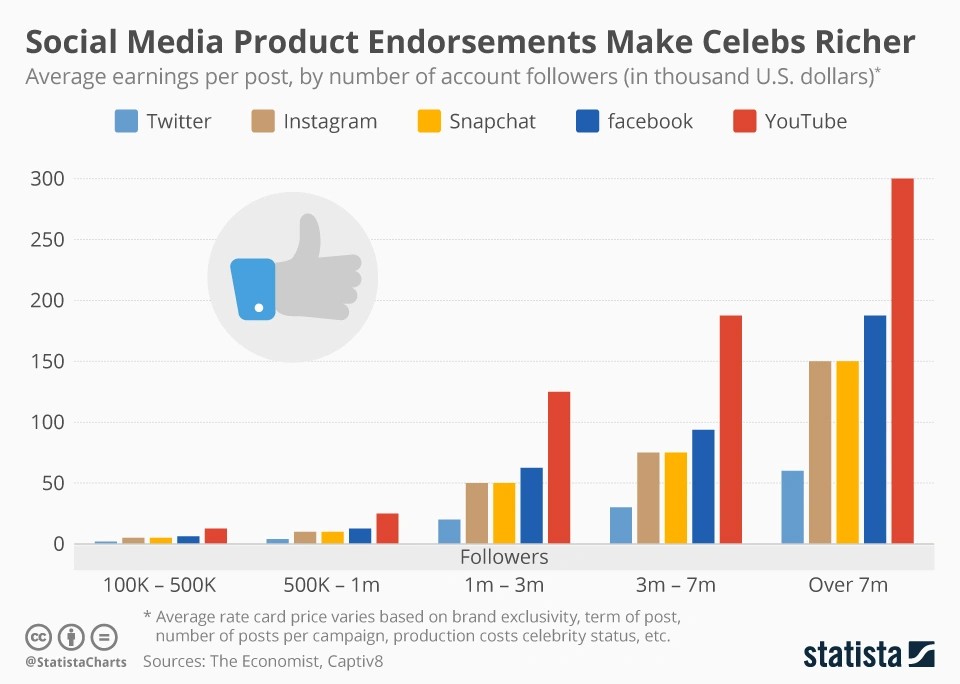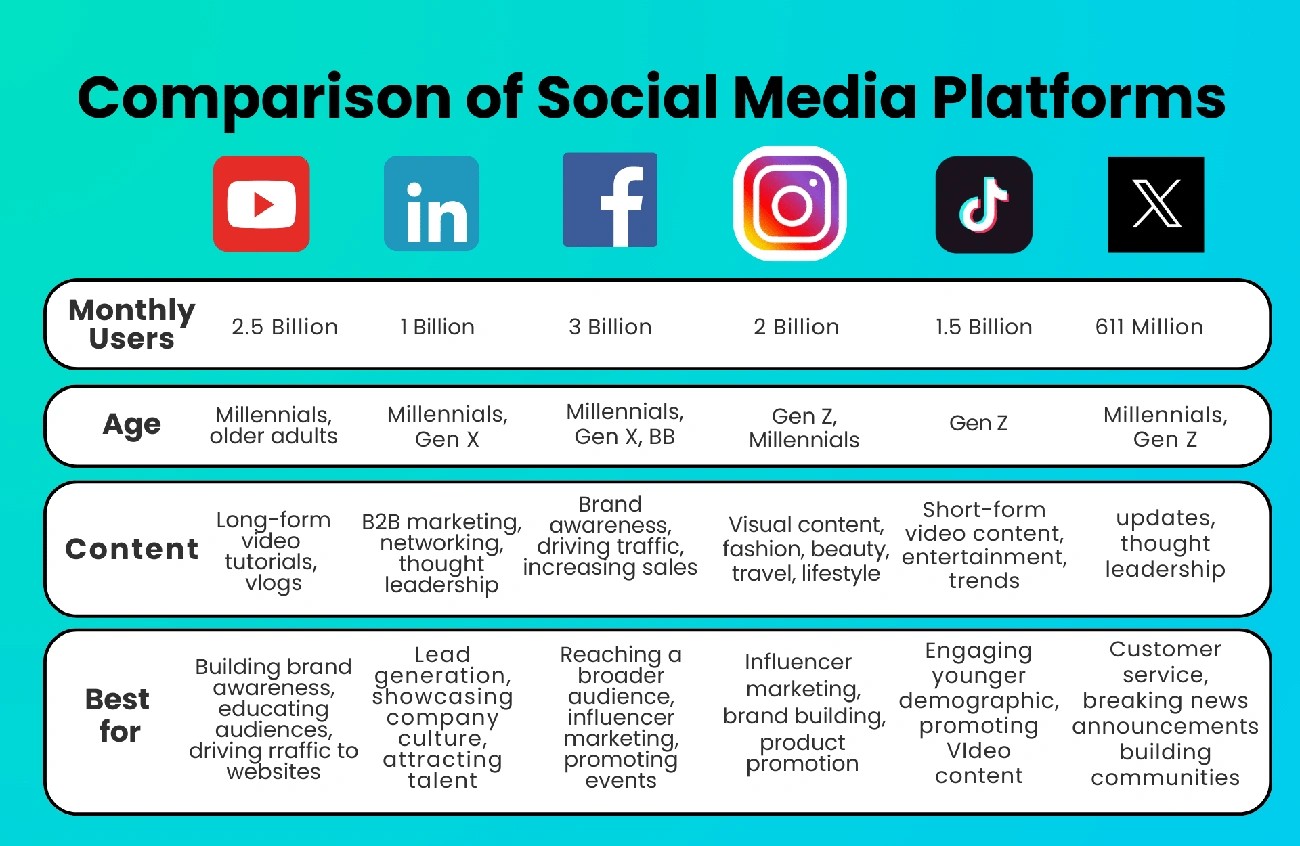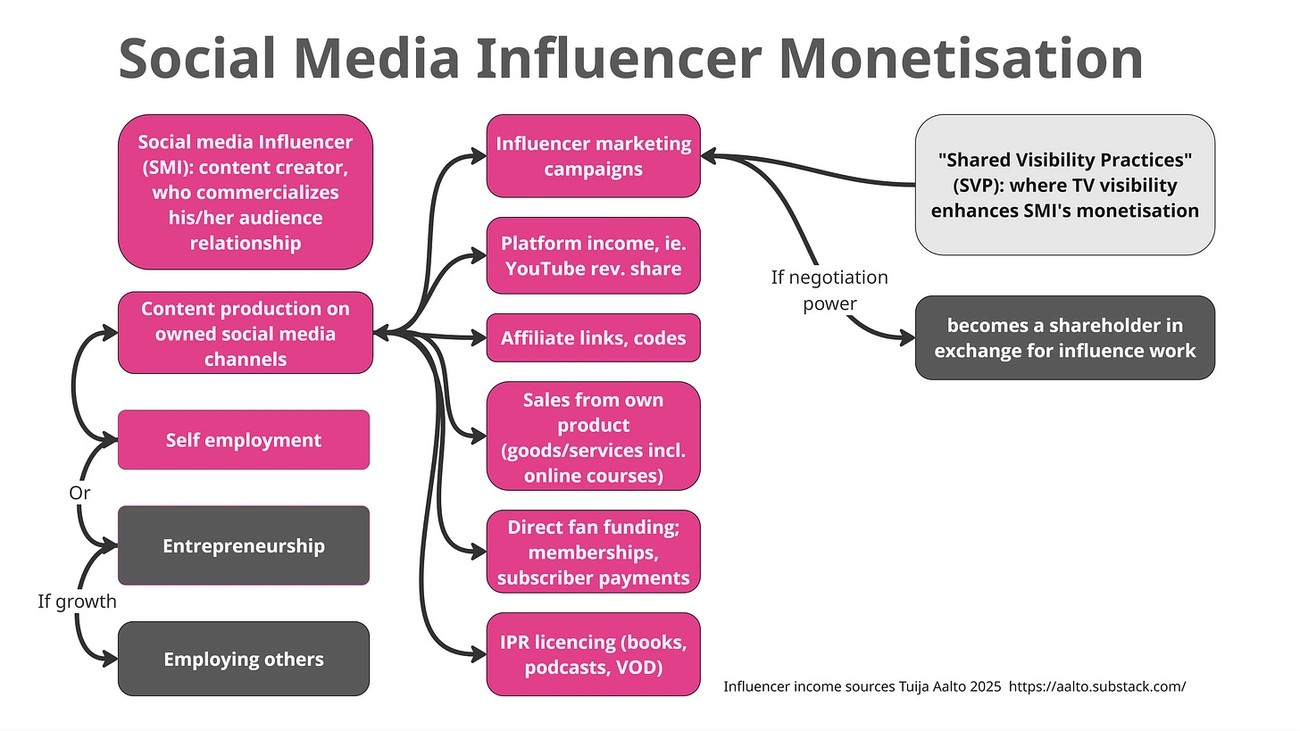Have you ever wondered about influencer earnings in today’s digital economy? The answer might catch you off guard. What started as a new trend has now transformed into a massive $250 billion global industry in 2025, growing from $210 billion last year . Cristiano Ronaldo earns a staggering $2,397,000 per post, while Lionel Messi follows with $1,777,000 . These celebrity figures don’t paint the typical creator’s picture.
The actual money influencers make shows huge variations. Recent data reveals most influencers earn between $195 and $1,900 for each sponsored post . Their rates depend heavily on follower count and engagement levels. Nano-influencers typically earn $100-$2,000 per post. Mega-influencers can ask for $45,000 or more for a single Instagram collaboration . The Instagram influencer industry’s value stands at $16.4 billion . Yet, all but one of these creators (48 percent) earn $15,000 or less yearly . This piece breaks down influencer earnings in 2025 on different platforms, follower counts, and content types to give you a complete view of the creator economy.
How much do influencers make by follower count

Image Source: Statista
Your follower count is still the main way to classify influencers and figure out how much they can earn. Let’s take a closer look at what creators might earn in 2025.
Nano influencers (1K–10K followers)
Nano influencers might be just starting out, but brands love them for their authentic connections. These creators usually earn $10 and $100 per sponsored post [1], though some reports show earnings up to $195 per post on average [1].
These creators are great for brands because they have really high engagement rates. Brands value how they connect directly with specific communities and their genuine voice. Many at this level still accept products as part of their payment. All the same, nano influencers can make a few hundred dollars each month through steady brand deals and affiliate links [2].
Micro influencers (10K–100K followers)
Brands find their sweet spot with micro influencers who offer good rates and great engagement. These creators usually get $100 to $500 per post [1], but some data shows average earnings around $1,211 per post [1].
Micro influencers are a great deal for brands since they keep better audience relationships than bigger creators. Most stick to specific topics and become experts in their field. With regular partnerships, they can pull in several thousand dollars monthly [2].
Mid-tier influencers (100K–500K followers)
Content gets more polished at this level and the money gets better. Mid-tier influencers usually make $500 to $5,000 per post [2], with some platforms paying $8,000 to $20,000 [3].
These creators often vary their income through brand deals, merch, or digital products. Many sell content packages to brands instead of single posts. Their audiences have grown bigger than close-knit communities but still stay pretty engaged.
Macro influencers (500K–1M followers)
Macro influencers are like celebrities in their niches. They can ask for $5,000 to $10,000 per post [2], and some platforms pay $20,000 to $45,000 [3].
Most macro influencers make their full living from social media. Talent agencies represent them and they work on big campaigns that run for weeks or months. On top of that, they usually have multiple ways to make money beyond sponsored posts.
Mega influencers (1M+ followers)
The biggest social media stars get the biggest paychecks. Mega influencers typically earn $10,000 to $50,000+ per post [1], and celebrity influencers can make over $1 million for a single sponsored post [4].
Their engagement rates usually drop at this level, with mega influencers getting 1-2% engagement compared to the 3-6% seen with micro influencers [4]. But their huge reach makes them perfect for major brand campaigns that need maximum visibility.
Creators who want to protect their income can use tools like Rupa to turn their content into digital products that make money whatever the algorithm does or how many followers they have.
Earnings by platform: Instagram, TikTok, YouTube and more

Image Source: Mindesigns
Your choice of platform plays a big role in how much you can make as an influencer in 2025. This is a big deal as it means that platform earnings often matter more than follower count. Each platform gives creators different ways to make money.
Instagram: Stories, Reels, and posts
Instagram continues to be a goldmine for visual content creators. Nano-influencers with 1,000-10,000 followers can make $10-$100 per sponsored post [5]. The big players with 1M+ followers can ask for $10,000-$15,000 per collaboration [6].
Unlike YouTube, Instagram doesn’t pay you for views. Here’s how creators make money:
- Sponsored posts: This is where the real money is, and rates go up with your followers and engagement
- Instagram badges: Your viewers can buy these during live streams to support you
- Reels bonuses: You get extra money sometimes for making Reels
- Shop integrations: You can sell products through your feed and Stories
Your engagement rate matters more than your total followers on Instagram. Brands love working with micro-influencers who have super-engaged followers, even if their audience is smaller.
TikTok: Creator Fund and brand deals
TikTok gives creators several ways to earn, but brand deals bring in the most cash. 66.9% of TikTok creators say they make most of their money from brand deals [7].
TikTok pays creators through:
- Creator Rewards Program: You get $0.02-$0.04 per 1,000 views [7][8]
- Creativity Program: Launched in 2023, paying $0.40-$1.00 per 1,000 views for videos over a minute long [8]
- TikTok Live gifts: Viewers send virtual gifts you can turn into real money
- TikTok Shop: You earn commission from selling products
A million views on TikTok might only get you $20-$40 through the Creator Fund [8]. That’s why successful TikTokers focus on brand deals instead of platform payments.
YouTube: Ad revenue and sponsorships
YouTube stands out as the best platform for steady income. Through the YouTube Partner Program, you can make $0.01-$0.03 per view, which adds up to $10-$30 per 1,000 views [9]. On average, creators earn about $18 per 1,000 views [10].
YouTube offers more ways to earn:
- Channel memberships: Your subscribers pay monthly for special perks
- Super Chats/Stickers: Viewers tip you during live streams
- Sponsorships: Channels with 100,000+ subscribers can make $2,000-$50,000 per sponsored video [11]
Your earnings depend on your content type. Gaming channels make around $0.04 per view while entertainment channels get $0.02 per view [11].
Twitter/X and Facebook: Monetization options
Twitter/X has started offering ways to make money:
- Ad Revenue Sharing: You earn based on tweet engagement, usually $10-$20 per 100,000 impressions [12]
- Subscriptions: Monthly payments for exclusive content, from $2.99-$9.99 [13]
- Ticketed Spaces: Live audio events priced between $1-$999 where you keep 80% of the money [13]
You’ll need 500+ followers and X Premium/Verified Organizations subscription to start earning [14].
Facebook gives you similar options plus:
- In-stream ads: Money based on views and engagement
- Stars tipping system: Viewers send virtual gifts during live videos
- Paid subscriptions: Monthly fees for exclusive content
Tools like Rupa help creators who want to be less dependent on platform algorithms. You can turn your content into digital products and make money no matter how the algorithms change.
How much do influencers make per post in 2025
Sponsored post rates on social media have skyrocketed in 2025. The influencer marketing industry expects to reach $33 billion globally this year [15]. Brands now pour massive investments into creator partnerships.
Average rates by platform
Instagram stands as the premium platform for influencer pay in 2025. Nano-influencers (1K-10K followers) earn $500-$2,000 per post, while mega-influencers pull in $45,000+ for a single collaboration [15]. TikTok shows similar numbers with its video format – nano-creators make $500-$2,000 and top-tier influencers receive $45,000+ per video [15].
YouTube leads the pack with the highest rates because of its demanding production needs. Nano-YouTubers pull in $1,000-$2,500 per sponsored video, and celebrity-level creators rake in $49,000+ [15]. Facebook posts bring in $500-$40,000 based on follower count [15].
Research reveals that half of all influencers set their rates between $250-$1,000 per post whatever the platform [16]. Most creators – about 71% – offer better deals for long-term partnerships [16].
Factors that affect per-post pricing
Follower count isn’t everything. Several elements shape what influencers can charge:
- Engagement rate matters more than followers, with brands paying $100-$750 per 1,000 engagements [1]
- Usage rights when brands want to reuse content in ads
- Exclusivity clauses that block work with competitors
- Content complexity makes videos pricier than photos
- Production values and time invested
- Industry niche lets finance and healthcare influencers charge premium rates
Campaign duration and tight deadlines push prices up, and many creators add rush fees for quick turnarounds [17].
Examples of high-earning influencers
MrBeast leads the pack with $85 million in 2025. His empire spans Feastables candy, a fast food chain, and an Amazon streaming deal. The “top scripted video creator in digital” Dhar Mann follows with $56 million [18].
Comedy stars Matt Rife and Jake Paul each earned $50 million [18]. Ryan Kaji built his $35 million empire [18] from humble beginnings – he started by unboxing toys on YouTube at age 3.
Smart creators look beyond unpredictable post rates. Many now head over to digital products that provide steady income streams instead of relying just on sponsored content.
How influencers make money beyond sponsored posts

Image Source: Tuija Aalto – Substack
Successful influencers know how to broaden their income streams beyond sponsored posts. The most financially stable creators use multiple revenue channels at once to maximize their earnings.
Affiliate marketing and discount codes
Affiliate marketing is a great way to get income as influencers earn commissions from sales through their unique links or discount codes. About one in five influencers (19%) count affiliate links among their top money makers. They usually earn 5-10% per sale. Fashion, beauty, and lifestyle influencers find this model works best since they can smoothly add product recommendations into their content.
Selling products or merchandise
Branded merchandise has become a major income source for 2-3 year old creators. Custom t-shirt printing alone will reach USD 3.10 billion by 2025 [19]. Some creators hit amazing numbers – Matt Meagher made $40,000 in merch sales in just one day [20]. Many creators now use print-on-demand services to avoid inventory risks and test designs without paying upfront.
Ad revenue and platform bonuses
Direct sponsorships are just the start – platforms now give creators many ways to earn:
- Meta has rolled out unlimited earning potential through performance-based bonuses on Threads and Instagram [21]
- YouTube creators earn $0.01-$0.03 per view through the Partner Program
- TikTok’s Creator Fund gives creators about $0.02-$0.04 per 1,000 views
Subscriptions and exclusive content
Monthly memberships give creators steady income. Instagram lets creators share exclusive content with a purple ring at their chosen price point [22]. Platforms like Patreon offer tiered memberships, which bring in up to 85% of total income [20] for some creators.
User-generated content licensing
UGC (User-Generated Content) creation has become profitable even without a huge following. Brands now pay for content made just for their channels instead of the creator’s own page [23]. The hashtag #UGC has gotten over 2.1 billion views on TikTok [23], which shows how popular it has become.
Speaking gigs and live events
Public speaking brings in big money for experienced influencers. Speakers can earn from a few hundred to thousands of dollars per event [24]. Live events also create extra income through ticket sales, merchandise, and meet-and-greets [25].
Creators who want to be less dependent on platform algorithms can turn their existing content into digital products. This approach provides steady revenue without relying too much on social media visibility.
What affects how much influencers get paid
Several key factors affect influencer pay in today’s creator economy. These go beyond just counting followers. Two influencers with similar follower counts might earn very different rates.
Engagement rate vs follower count
Brands value engagement rate more than raw follower numbers to decide compensation. Studies show influencers with can earn premium rates even with smaller audiences higher engagement[26]. Brands pay more money to creators whose audiences interact with their content [26]. A good engagement rate starts at 2% for all tiers. Smaller influencers (1K-20K) need to maintain 4-7% engagement [27].
Niche and content type
Specialized influencers earn more money because of their dedicated audience’s value [26]. Content complexity affects pricing too. Video content needs more effort than static posts, which leads to higher pay [26]. Rates vary by industry. Finance and healthcare influencers usually get premium rates [2].
Audience demographics and location
A brand’s target market must match the influencer’s audience [28]. Age distribution, location, income level, and education affect potential earnings [29]. Brands look for influencers whose followers match their ideal customer profile [30].
Negotiation skills and brand relationships
Better rates come from long-term partnerships. for extended collaborations 71% of influencers give discounts[31]. Content bundling across platforms has become common. Over 90% of influencer marketers pair TikTok videos with Instagram Reels [32].
Conclusion
Numbers paint an interesting picture of the creator economy in 2025. Mega-influencers rake in millions per post, yet most creators earn between $195 and $1,900 for sponsored content. This huge gap shows why successful influencers don’t put all their eggs in the brand deals basket anymore.
The smartest creators treat their content like a real business. They mix sponsored posts with affiliate marketing, merchandise, platform-specific monetization programs, and subscription models. This strategy helps them stay stable when algorithms change, platforms evolve, and markets go up and down.
Your follower count matters, of course, but your earning potential depends on engagement rate, content quality, niche expertise, and negotiation skills. Brands now prefer micro and nano influencers who have tight-knit communities over bigger accounts that don’t connect as well with their followers.
Content creators find their freedom by developing digital products like courses and memberships. Tools like Rupa help turn existing content into money-making assets that don’t depend on platform visibility. Creators can build stronger relationships with their audience and create steady income streams.
The creator economy keeps changing faster than ever. Content creators who adapt quickly, vary their income streams wisely, and build real connections with their audiences will succeed whatever the platforms throw at them. The opportunities for content creators are more plentiful and available today than ever before.
Key Takeaways
The influencer economy has exploded into a $250 billion industry, but earnings vary dramatically based on strategy, platform choice, and audience engagement rather than just follower count.
• Follower count determines base rates: Nano-influencers earn $10-$100 per post, while mega-influencers command $10,000-$50,000+, but engagement often matters more than raw numbers.
• Platform choice significantly impacts earnings: YouTube offers the highest consistent revenue through ad sharing, while Instagram dominates sponsored content rates across all creator tiers.
• Diversification is essential for stability: Successful creators combine sponsored posts with affiliate marketing, merchandise, subscriptions, and digital products to create multiple income streams.
• Engagement beats follower count: Brands increasingly pay premium rates for micro-influencers with 4-7% engagement over mega-influencers with only 1-2% interaction rates.
• Most creators earn modestly: Despite celebrity success stories, 48% of creator-earners make $15,000 or less annually, highlighting the importance of strategic income diversification.
The key to sustainable creator success lies in building genuine audience relationships while developing multiple revenue streams that don’t depend solely on algorithm visibility or platform changes.
FAQs
Q1. How much can influencers expect to earn in 2025? Influencer earnings vary widely, with most creators making between $195 and $1,900 per sponsored post. Nano-influencers (1K-10K followers) might earn $10-$100 per post, while mega-influencers (1M+ followers) can command $10,000-$50,000 or more for a single collaboration.
Q2. What factors affect an influencer’s earning potential? Several factors impact influencer earnings, including engagement rate, content niche, audience demographics, negotiation skills, and platform choice. Engagement rate often outweighs follower count, with brands typically paying $100-$750 per 1,000 engagements.
Q3. Which social media platform offers the highest earning potential for influencers? YouTube generally offers the highest consistent revenue through its ad-sharing program, paying creators approximately $10-$30 per 1,000 views. However, Instagram dominates in terms of sponsored content rates across all influencer tiers.
Q4. How are influencers diversifying their income streams beyond sponsored posts? Successful influencers are diversifying their income through multiple channels, including affiliate marketing, merchandise sales, platform-specific monetization programs (like YouTube’s Partner Program), subscription models, content licensing, and speaking engagements.
Q5. Is it possible to make a full-time income as an influencer in 2025? While it’s possible to earn a full-time income as an influencer, it’s important to note that 48% of creator-earners make $15,000 or less annually. Successful full-time influencers typically combine multiple revenue streams and have highly engaged audiences, regardless of follower count.
